


Assistant Professor
Jennifer Jacobs researches ways to support expressive computer-aided design, art, and manufacturing by developing new computational tools, languages, and systems that integrate emerging forms of computational creation and digital fabrication with traditional materials, manual control, and non-linear design practices. More broadly, she works on ways to enable art and design professionals to leverage their domain expertise to quickly and effectively develop personal software tools.
Dr. Jacobs is a faculty member at UC Santa Barbara in Media Arts and Technology and Computer Science (by courtesy). Trained in computer science, design, and fine art, Jacobs received her Ph.D. from the Massachusetts Institute of Technology’s Media Lab and completed her postdoctoral research in the Computer Science Department at Stanford University. She also received an M.F.A. and B.F.A from Hunter College and the University of Oregon respectively. Her research has been presented at international venues including SIGGRAPH, DIS, CACM, Ars Electronica and CHI, where her research has received multiple best paper awards.
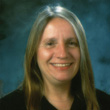
Distinguished Professor, MAT Diversity Officer
Dr. Kuchera-Morin is a composer, Professor of Media Arts and Technology and Music, and a researcher in multi-modal media systems, content and facilities design. She created, built, and designed the Center for Research in Electronic Art Technology and is the Center Director since its inception in 1986. Her years of experience in digital media research led to the creation of a multi-million dollar sponsored research program for the University of California, the Digital Media Innovation Program. She was Chief Scientist of the Program from 1998 to 2003. In 2000 she began the creation, design, and development of a Digital Media Center within the California Nanosystems Institute. The culmination of her design is the AlloSphere Research Laboratory, a three-story metal sphere inside an echo-free cube, designed for immersive, interactive scientific and artistic investigation of multi-dimensional data sets. She serves as Director and Chief Scientist of the AlloSphere Research Facility.
A composer of mixed media works, she received her Ph.D in 1984 from the Eastman School of Music, University of Rochester. Her current music research is focusing on a general purpose interface for control of digital information through natural performance gesture. A composer of primarily electro-acoustic works, her music has been performed throughout the United States, Europe and Asia.
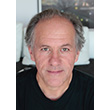
Distinguished Professor
Directs the Experimental Visualization Lab in Media Arts & Technology
Office: 2211 Elings Hall, lab: 2611 Elings Hall
glegrady (at) ucsb.edu
MFA San Francisco Art Institute. Specialization: Data visualization, computation & photography, interactive media art installation, mobile robotic multi-camera imaging.
George Legrady, Distinguished Professor of Digital Media. He is former Media Arts & Technology department chair (2013-2017). Prior academic appointments were held at the Merz Akademie University of Visualization, Stuttgart, Germany (1996-2000); San Francisco State University (1989-2007); University of Southern California (1984-1988); California Institute of the Arts (1982-1984); and the University of Western Ontario (1978-1981). He was visiting faculty at UCLA, Nova Scotia College of Art & Design, and the National Academy of Fine Arts, Budapest, Hungary. Since 2017, he is a research fellow at the Institut des mines-telecom ParisTech, Paris, France and the iCinema Lab, at the University of New South Wales, Sydney, Australia.
The Experimental Visualization Lab (ExpVisLab) is one of 7 dedicated research labs in the Media Arts & Technology arts-engineering program at UCSB. The lab focuses on computational-based creative explorations in the fields of data visualization, visual language, machine vision, computational photography, interactive digital installations and related directions addressing the impact of computation on visualization. The experiments, projects and courses we do and offer contribute to the arts-engineering / scientific community in the following way: 1) Explore new forms of visualizations through implementation of advanced knowledge of visual language, image syntax and semiotics 2) Rapid testing of concepts through visual/spatial/interactive means 3) Address image-based research that are on the fringe of engineering / science research for artistic exploration. Research has been funded by the National Science Foundation, the Robert W. Deutsch Foundation, UCSB Center for NanoTechnology in Society, University of California Faculty Senate Research Grants, University of California Institute for Research in the Arts.
External Website: www.georgelegrady.com
Legrady's artistic works have been supported by awards from the Creative Capital Foundation, the Daniel Langlois Foundation for the Arts, Science and Technology, the Canada Council for the Arts, the National Endowment for the Arts, and a John Simon Guggenheim Fellowship in Visual Arts in 2016. His commission for the Seattle Public Library, "Making Visible the Invisible", begun in 2005 is a permanent installation consisting of algorithms that statistically analyze the flow of books and other media that are checked-out daily from the library to map out how library culture is changing over time. The visualization is scheduled for operation until 2019, with approximately 30000 items checked-out per day resulting at this time, in a collection of over 90 million datasets.
His contribution to the digital media field since the early stages of its formation into a discipline in the early 1990’s has been in intersecting cultural content with data processing as a means of creating new forms of aesthetic representations and socio-cultural narrative experiences.
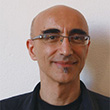
Professor, Department Chair
M. Arch+Certificate of Specialization in CAAD (Computer Aided Architectural Design), Ohio State University, Professor (specialties: Media and Virtual Architecture, Transvergence, TransArchitecture).
Marcos Novak is a pioneer in the field of virtual architecture. In the mid 90s, his contribution to Inteational architectural discourse was further expanded by the coining and definition of the term "Transarchitectures" His approach: "we conceive algorithmically (morphogenesis); we model numerically (rapid prototyping); we build robotically (new tectonics); we inhabit interactively (intelligent space); we telecommunicate instantly (pantopicon); we are informed immersively (liquid architectures); we socialise nonlocally (nonlocal public domain); we evert virtuality (transarchitectures)". He has also posited a new "Soft Babylon," a theoretical stance which posits that our digitized architectural palette is causing us to create a wired Situationist city, while we struggle with some of the massive paradigm shifts that our era will and must face. Whilst articulating highly fluent theory, he has practiced, producing beautiful ethereal architectures that flux and shimmer as his algorithms run their designed logics. He received the Masters of Architecture at Ohio State university in 1983. Since that time he has taught at Ohio State, University of Texas Austin, the Architecture program at UCLA, the Digital Media program at UCLA, and the Art Center College of Design, in Pasadena. He has published, lectured and exhibited his work internationally.
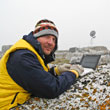
Professor
Office: room 2205. Lab: room 3005 (Systemics Lab), Elings Hall.
peljhan (at) mat.ucsb.edu
A native of Slovenia and a theatre and radio director by profession, Peljhan founded the arts and technology organization Projekt Atol in the early 90's and cofounded one of the first media labs in Eastern Europe, LJUDMILA in 1995. In the same year, the founded the technology branch of Projekt Atol called PACT SYSTEMS where he developed one of the first Global Positioning Systems based participatory networked mapping projects, the Urban Colonisation and Orientation Gear 144. He has been working on the Makrolab, a project that focuses on telecommunications, migrations and weather systems research in an intersection of art and science from 1997-2007, the Interpolar Transnational Art Science Constellation during the International Polar Year (project 417) and is currently coordinating the Arctic Perspective Initiative art/science/tactical media project focused on the global significance of the Arctic geopolitical, natural and cultural spheres together with Matthew Biederman. Peljhan has also been the flight director of ten parabolic experimental flights in collaboration with the Microgravity Interdisciplinary Research initiative and the Yuri Gagarin Cosmonaut Training Centre, creating conditions for artists to work in alternating gravity conditions. During the series of World Information.org projects, he has installed several communications mapping and interception systems and projects and his research led him to map the command and control communications networks and response during the Srebrenica genocide. He is the recipient of many prizes for his work, including the 2001 Golden Nica Prize at Ars Electronica together with Carsten Nicolai for their work, polar, and the UNESCO Digital Media Prize for Makrolab in 2004. During 2008, Peljhan was appointed as one of the European Union Ambassadors of Intercultural dialogue. His work was exhibited internationally at multiple biennales and festivals (Venice, Gwangju, Brussels, Manifesta, Johannesburg, Istanbul), at the documenta X in Kassel, several ISEA exhibitions, several Ars Electronica presentations and major museums, such as the P.S.1 MOMA, New Museum of Contemporary Art, ICC NTT Tokyo, YCAM Yamaguchi, Van Abbemuseum and others. From 2009 on he is the one of the series editors of the Arctic Perspective Cahiers series (Hatje Cantz and API). He holds joint appointments with the Department of Art and the Media Arts & Technology graduate program at the University of California Santa Barbara, and was appointed as Co-Director of the Univerisy of California system-wide Institute for Research in the Arts in 2009, where he is coordinating the art/science Integrative methodologies initiative. He is also the director of the MAT Systemics Lab, located in Elings Hall.
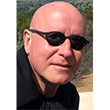
Professor, Vice Chair, and Graduate Advisor
Curtis Roads creates, teaches, and pursues research in the interdisciplinary territory spanning music and sound technology. He studied electronic music and computer music composition at California Institute of the Arts (CalArts) and the University of California, San Diego (UCSD) and received a Doctorate from the Université Paris 8.
He was Editor and Associate Editor of Computer Music Journal (The MIT Press) from 1978 to 2000, and cofounded the International Computer Music Association (ICMA) in 1979.
A researcher at MIT (1980-1986), he also worked in the computer software industry for a decade. He taught electronic music composition at Harvard University and sound synthesis techniques at the University of Naples Federico II. He was appointed Director of Pedagogy at Les Ateliers UPIC (later CCMIX) and Lecturer in the Music Department of the Université Paris 8.
Among his books are the anthologies Foundations of Computer Music (1985, The MIT Press) and The Music Machine (1989, The MIT Press). His textbook The Computer Music Tutorial (1996, The MIT Press) is widely adopted as a standard classroom text and has been published in French (1999, third edition 2016), Japanese (2001), and Chinese (2011). He edited the anthology Musical Signal Processing in 1997. His book, Microsound (2001, The MIT Press) presents the techniques and aesthetics of composition with sound particles.
A pioneer in the development of granular synthesis (1974), he also developed (with Alberto de Campo) the program PulsarGenerator (2001), distributed by the Center for Research in Electronic Art Technology (CREATE) at UCSB. In 2008, CREATE released EmissionControl, a new program for sound granulation written by David Thall in consultation with Curtis Roads. In 2013-2016, he collaborated with programmer Sekhar Ramakrishnan to design SpatialChords, a front-end to Ramakrishnan’s Zirkonium spatializer program, based on a theory of "spatial chords" or geometric forms in three-dimensional sound space. The software was tested in performances on the 48.4 speaker Klangdom of the ZKM, the 54.1 AlloSphere at UCSB, and the 28.2 sound system of the Mumuth in Graz, Austria.
His composition Clang-tint (1994) was commissioned by the Japanese Ministry of Culture (Bunka-cho) and the Kunitachi College of Music, Tokyo. His music is available on discs produced by the MIT Media Laboratory, Wergo, Mode, and Presto!?, among others. His collection of electronic music compositions POINT LINE CLOUD won the Award of Distinction at the 2002 Ars Electronica in Linz and was released as a CD + DVD on the Asphodel label in 2005.
In 2010 he was awarded the lifetime achievement award from the Society for Electro-Acoustic Music in the United States (SEAMUS). In 2016 he was awarded the Giga-Hertz Prize by the ZKM, Karlsruhe, and Sudwest Rundfunk, Baden-Baden.
In 2004, he began researching a new method of sound analysis that is the analytical counterpart of granular synthesis called dictionary-based pursuit (DBP). His research partners included Garry Kling, Bob Sturm, Aaron McLaren, and John Shynk. This research was sponsored by the National Science Foundation in 2007-2009 and resulted in a Best Paper award at the 2008 International Computer Music Conference.
His book Composing Electronic Music: A New Aesthetic (Oxford University Press) appeared in 2015.
A new Second Edition of The Computer Music Tutorial (MIT Press) was published in June 2023.
A collection of new electronic music called Flicker Tone Pulse, with visualizations by Brian O’Reilly is now available on a Wergo DVD.
His 2005 CD/DVD album POINT LINE CLOUD was re-issued by Presto!? Records, Milan in 2019.
The Slowscan label released in 2021 a collection of his electronic music on vinyl LP.
CREATE released the real-time granulation app EmissionControl2 for MacOS, Windows, and Linux in 2020. The EC2 project was realized by a team consisting of Roads as project manager, with software developers Jack Kilgore and Rodney Duplessis. The new release (2021) includes support for Open Sound Control.

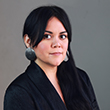
Assistant Professor (Computational Craft and Haptic Media)
Department of Art
Undergraduate Diversity Officer
Arts 0250
rosalena (at) arts.ucsb.edu
Sarah Rosalena Brady is Assistant Professor of Art at UC Santa Barbara in Computational Craft and Haptic Media. She is the founder of Uproot, UCSB's first BIPOC art coalition. Her work deconstructs technology with material interventions, creating new narratives for hybrid objects that function between human/nonhuman, ancient/future, handmade/autonomous to override power structures rooted in colonialism. She was recently given the Creative Capital Award, the LACMA Art + Tech Lab Grant, the Steve Wilson Award from Leonardo, the International Society for Art, Sciences, and Technology, Carolyn Glasoe Bailey Foundation Art Prize, and the Craft Futures Grant from Center for Craft. She has presented her work and research at places such as Blum & Poe Gallery, LACMA, Frieze LA, and SOMArts Cultural Center. Her work is in the permanent collection at the Los Angeles County Museum of Art.

Associate Professor
Department of Film and Media Studies
2018 Social Sciences and Media Studies Building
achang (at) filmandmedia.ucsb.edu
Alenda Chang joined the UCSB faculty in 2015, following two years as a digital humanities and environmental literature professor at the University of Connecticut (Ph.D. Rhetoric, UC Berkeley; MA English Language and Literature, University of Maryland). Her research and teaching encompass environmental media, the history and theory of electronic media, game studies, science and technology studies, and sound studies. Her first book, Playing Nature: Ecology in Video Games, develops environmentally informed frameworks for understanding and designing digital games (University of Minnesota Press, December 2019). At UCSB, she directs the Creative Computing Initiative and co-directs Wireframe, a media studio that promotes collaborative theoretical and creative media practice with investments in global social and environmental justice. She is also the founding co-editor of a new UC Press open-access journal, Media+Environment.

Assistant Professor
Department of Mechanical Engineering
2332 Engineering II Building
ewhawkes (at) engineering.ucsb.edu
Elliot Hawkes’s research focuses on bringing together design, mechanics, and non-traditional materials to advance the vision of robust, adaptable, human-safe robots that can thrive in the uncertain, unstructured world. Current projects involve bio-inspired microstructured adhesive materials, non-linear compliant mechanisms, high-power soft actuators, soft exoskeletons, and growing robots.
Elliot W. Hawkes is an Assistant Professor of Mechanical Engineering at UCSB. He completed a postdoctoral fellowship at Stanford University, where he also earned his MS and PhD in Mechanical Engineering. Previously, he worked at the Harvard Microrobotics Lab and the ETH Multi-scale Robotics Lab. He recently received the NSF CAREER Award, the NASA Early Career Faculty Award, and the Packard Fellowship. His work has received press from outlets such as the NY Times, BBC, Cell, Science, and the Late Show with Stephen Colbert.

Professor
Department of Computer Science
2155 Engineering I
holl (at) cs.ucsb.edu
Tobias Hollerer is Associate Professor of Computer Science at the University of California, Santa Barbara and Adjunct Professor in Media Arts and Technology. He co-directs the "Four Eyes Laboratory" conducting research in the four I's of Imaging, Interaction, and Innovative Interfaces. Tobias holds a graduate degree in informatics from the Technical University of Berlin and MS and PhD degrees in computer science from Columbia University. He is a recipient of the National Science Foundation's CAREER award, for his work on "Anywhere Augmentation", which enables computer users to place annotations in 3D space wherever they go, employing the physical world as user interface. Beyond this, Tobias's main research interests lie in virtual reality, 3D displays and interaction, visualization, mobile and wearable computing, and adaptive user interfaces.
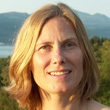
Professor
Department of Art
Lisa Jevbratt's work - ranging from internet visualization software to biofeedback and interspecies collaboration - is concerned with collectives and systems, the languages and conditions that generate them, and the exchanges within them. The projects explore alternative, distributed and unintentional collaborations and expressions of these collectives. Her projects have been exhibited internationally, in venues such as The Walker Art Center (Minneapolis), Banff Centre for the Arts (Canada), The New Museum (New York), The Swedish National Public Art Council (Stockholm, Sweden), and the Biennial at the Whitney Museum of American Art (New York). Her work is discussed in numerous books, for example, in "Internet Art" by Rachel Greene and "Digital Art" by Christiane Paul (Thames and Hudson). Jevbratt also publishes texts on topics related to her work and research, for example in the anthology "Network Art - Practices and Positions" (Routledge).
MFA Computers in Fine Arts, CADRE, San Jose State University. Specialization: Software/Network Art, Information Mapping/Visualization.
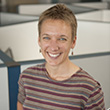
Professor
Department of Computer Science
Chandra Krintz is a Professor at the University of California, Santa Barbara (UCSB). She joined the UCSB faculty in 2001 after receiving her M.S. and Ph.D. degrees in Computer Science from the University of California, San Diego (UCSD). Chandra's research interests include automatic and adaptive compiler, programming language, virtual runtime, and operating system techniques that improve performance (for high-end systems) and that increase battery life (for mobile, resource-constrained devices). Her recent work focuses on progamming language and runtime support for cloud computing. Her group has recently developed and released AppScale - an open-source platform-as-a-service cloud computing system that implements the Google App Engine (GAE) APIs and that facilitates next-generation cloud computing research. Chandra has supervised and mentored over 40 students, has published her work in a wide range of ACM venues including CGO, ECOOP, PACT, PLDI, OOPSLA, ASPLOS, and others, and leads several educational and outreach programs that introduce computer science to young people, particularly those from underrepresented groups. Chandra's efforts have been recognized with a 2006 NSF CAREER award, the 2008 CRA-W Anita Borg Early Career Award (BECA), and the 2008-9 UCSB Academic Senate Distinguished Teaching Award. Chandra is an ACM Senior Member and an IEEE Senior Member.
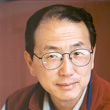
Professor
Department of English
Alan Liu is Professor in the English Department at the University of California, Santa Barbara, and previously a faculty member in the English Department and British Studies Program at Yale University. He began his research in the field of British romantic literature and art. His first book, Wordsworth: The Sense of History (Stanford Univ. Press, 1989), explored the relation between the imaginative experiences of literature and history. In a series of theoretical essays in the 1990s, he explored cultural criticism, the “new historicism,” and postmodernism in contemporary literary studies. In 1994, when he started his Voice of the Shuttle Web site for humanities research, he began to study information culture as a way to close the circuit between the literary or historical imagination and the technological imagination. In 2004, he published his The Laws of Cool: Knowledge Work and the Culture of Information (Univ. of Chicago Press). Recently published from Univ. of Chicago Press is Local Transcendence: Essays on Postmodern Historicism and the Database. Liu founded the NEH-funded Teaching with Technology project at UC Santa Barbara called Transcriptions: Literature and the Culture of Information (recently renamed Literature.Culture.Media) and his English Dept’s undergraduate specialization on Literature and the Culture of Information. During 2002-2007 he was a member of the Board of Directors of the Electronic Literature Organization (ELO) and chair of the Technology/Software Committee of the ELO’s PAD Initiative (Preservation / Archiving / Dissemination of Electronic Literature). His current major project, which he started in 2005 as a University of California multi-campus, collaborative research group, is Transliteracies: Research in the Technological, Social, and Cultural Practices of Online Reading.

Professor
Electrical and Computer Engineering
PhD, Signal & Image Processing, University of Southern California
Communications & Signal Processing, Visual Computing and Interaction.
Manjunath's research areas include image/video analysis (including texture and shape analysis, segmentation, registration); multimedia databases and data mining (feature extraction, content based access, high dimensional indexing and similarity search); steganography (data hiding in images and video, and their detection); and signal/image processing for bio-informatics.

Professor
Department of History
3251 Humanities and Social Sciences Building
pmccray (at) history.ucsb.edu
W. Patrick McCray is a professor in the History Department at UCSB. McCray entered the historians’ profession via his background in materials science and engineering. His doctoral research examined the culture and technology of glassmaking in Renaissance Venice. Since 1996, he has written widely on the history of science and technology after 1945 including two books: Giant Telescopes: Astronomical Ambition and the Promise of Technology (Harvard University Press, 2004) is an exploration of the politics, policy, and technology behind the current generation of ground-based telescopes while Keep Watching the Skies: The Story of Operation Moonwatch and the Dawn of the Space Age (Princeton University Press, 2008) chronicles the activities of citizen-scientists who organized a global network of satellite spotters during the Cold War.
When he arrived at UCSB, McCray became more interested in the history of nanotechnology and how it intersected with his prior research on the history of materials. He is a founding member and co-PI for the NSF-funded Center for Nanotechnology in Society at UCSB. He currently leads one of the CNS’s research initiatives; this explores the history of nanotechnology and its place in the broader context of the 20th century science and technology.
As a historian, McCray is fascinated by the visions of the future that litter the past. He is currently writing a new book about "visioneers" - people who used their technical expertise to promote visions of a more expansive future made possible by the technologies they studied, designed, and promoted. In 2010-11, he shared a Collaborative Research Fellowship from the American Council of Learned Societies with Cyrus Mody (Rice University) and Mara Mills (NYU) which will help support the writing of this book as well as a new project on "high tech intellectuals".
In addition to this research, McCray is starting a new pilot project which considers the interaction between scientists, engineers, and artists during the first three decades of the Cold War. He is especially interested in the motives and ways these communities collaborated with one another, how Cold-War derived technologies such as lasers and digital computers were enlisted for artistic purposes, and the presence of Cold War themes such as nuclear war, cybernetics, and the Space Race in art from the 1950s, 60s, and 70s.
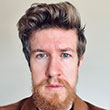
Assistant Professor
Department of Germanic and Slavic Studies
Fabian Offert is Assistant Professor for the History and Theory of the Digital Humanities in the Department of Germanic and Slavic Studies at the University of California, Santa Barbara. His research and teaching focuses on the visual digital humanities, with a special interest in the epistemology and aesthetics of computer vision and machine learning.
At UCSB, he is affiliated with the Media Arts and Technology program, the Comparative Literature program, and the Center for Responsible Machine Learning. He is also principal investigator of the UCHRI multi campus research group "Critical Machine Learning Studies" (2021-23), and the international research project "AI Forensics" (2022-25), funded by the VW foundation.
He holds a PhD from University of California, Santa Barbara, where he was a fellow of the Regents of the University of California, and a Diploma from the Institute for Applied Theater Studies in Gießen, Germany, where he was a student of composer and director Heiner Goebbels and a fellow of the German National Academic Foundation. Before joining the faculty at UCSB, he served as postdoctoral researcher in the DFG SPP "The Digital Image", associated researcher in the Critical Artificial Intelligence Group (KIM) at Karlsruhe University of Arts and Design, and Assistant Curator at ZKM Karlsruhe, Germany.
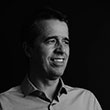
Professor, Corwin Chair of Composition
Composer João Pedro Oliveira holds the Corwin Endowed Chair in Composition for the University of California at Santa Barbara. He studied organ performance, composition and architecture in Lisbon. He completed a PhD in Music at the University of New York at Stony Brook. His music includes opera, orchestral compositions, chamber music, electroacoustic music and experimental video. He has received over 70 international prizes and awards for his works, including three Prizes at Bourges Electroacoustic Music Competition, the prestigious Magisterium Prize and Giga-Hertz Special Award, 1st Prize in Metamorphoses competition, 1st Prize in Yamaha-Visiones Sonoras Competition, 1st Prize in Musica Nova competition. He taught at Aveiro University (Portugal) and Federal University of Minas Gerais (Brazil). His publications include several articles in journals and a book on 20th century music theory.

Professor
Film and Media Studies
PhD, University of Wisconsin-Madison
2320 Social Sciences & Media Studies
lisa.parks (at) ucsb.edu
Lisa Parks is a Distinguished Professor of Film and Media Studies and Director of the Global Media Technologies and Cultures Lab at UC Santa Barbara. She is a media scholar and her research focuses on satellite technologies and media globalization; critical studies of media infrastructures; media, militarization, and surveillance; and environmental media.

Associate Professor
Film and Media Studies
PhD, University of Southern California
2020 Social Sciences & Media Studies
lailashereensakr (at) ucsb.edu
Art and Technology, Media Theory/Practice, Middle East Studies, Feminist Technologies, Digital Activism.
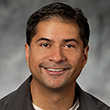
Professor
Department of Electrical and Computer Engineering
Pradeep Sen is a Professor in the UCSB MIRAGE Lab in the Department of Electrical and Computer Engineering at the University of California, Santa Barbara. He attended Purdue University from 1992 - 1996, where he graduated with a B.S. in Computer and Electrical Engineering. He then attended Stanford University where he received his M.S. in Electrical Engineering in 1998 in the area of electron-beam lithography. In 2000, he joined the Stanford Graphics Lab where he did research on real-time rendering and computational photography. He received his Ph.D. in Electrical Engineering in June 2006, advised by Dr. Pat Hanrahan. His research interests include algorithms for image synthesis, computational image processing, and computational photography, and he is a co-author of over 30 technical publications, including seven SIGGRAPH/SIGGRAPH Asia publications. Dr. Sen has been awarded more than $2.2 million in research funding, including an NSF CAREER award in 2009.

Professor
History of Art and Architecture
PhD, Yale
Contemporary art; material culture, craft, and design; art criticism; feminist historiographies and theory; art school pedagogies; queer culture and theory.
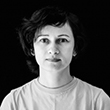
Assistant Professor
Department of Computer Science
Bio
Misha Sra is the John and Eileen Gerngross Assistant Professor and directs the Perceptual Engineering Lab in the Computer Science department at UCSB. She is also affiliated with UCSB's Center for Responsible Machine Learning (CRML). Misha received her PhD at the MIT Media Lab in 2018. She has published at the most selective HCI and VR venues such as CHI, UIST, VRST, and DIS where she received multiple best paper awards and honorable mentions. From 2014-2015, she was a Robert Wood Johnson Foundation wellbeing research fellow at the Media Lab. In spring 2016, she received the Silver Award in the annual Edison Awards Global Competition that honors excellence in human-centered design and innovation. MIT selected her as an EECS Rising Star in 2018. Her research has received extensive media coverage from leading media outlets (e.g., from Engadget, UploadVR, MIT Tech Review and Forbes India) and has drawn the attention of industry research, such as Samsung and Unity 3D.
Research
My vision: Human-AI Integration
As AI decouples intelligence from consciousness, as XR technologies transform perception, and as matter becomes machine manipulable, three key questions about the future arise: 1) what will newer AI-infused experiential interfaces look like where digital bits occupy space and algorithms have faces, 2) what can we learn about human behavior through human-AI interaction and how can AI models learn from human behavior, and 3) how will a shift from data-centric to human-centric AI systems augment our capabilities and enrich our lives? To answer these questions, our current work focuses on Human-Computer Interaction (HCI), eXtended Reality (XR), and Human-Centered Artificial Intelligence (AI). In particular, we investigate the design, engineering and study of human-AI integration through novel interfaces, interactions, tools and systems focusing on skill acquisition, task guidance and creative collaboration. Our goal is to create human-machine systems that extend the body and the mind, leaving us free to learn, to create, to think and to feel (Clynes and Kline. Cyborgs and Space. 1960).
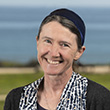
Professor
Ecohydrology and Ecoinformatics
Education
PhD, Geography, University of Toronto, Canada
MS, Geography, University of Toronto, Canada
BEng, Systems Design Engineering, University of Waterloo, Canada
Bio
Christina Tague's research is focused on the interactions between hydrology and ecosystem processes and, specifically, how eco-hydrologic systems are altered by changes in land use and climate. Much of her work involves developing and using spatial simulation models to integrate data from multiple field-based monitoring studies in order to generalize results to larger watersheds. Reflecting that emphasis, she is one of the principal developers of the Regional Hydro-Ecologic Simulation System (RHESSys), an integrated model of spatially distributed carbon, water, and nitrogen cycling. RHESSys is designed to provide science-based information about spatial patterns of ecosystem health and vulnerability in terms of water quantity and quality. Professor Tague is currently modeling the impacts of climate change on stream-flow patterns in the western United States and examining how urbanization alters drainage patterns and associated biogeochemical cycling in watersheds in Baltimore, Maryland, and Southern California.
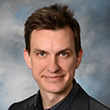
Associate Professor
RE Touch Lab - Director and Principal Investigator
Dr. Visell's directs the RE Touch Lab, leading fundamental and applied research on the future of interactive technologies. His research includes haptic engineering and perception, robotics, human-computer interaction, analog, digital, and spatial sound, motivated by emerging opportunities in human-computer interaction, sensorimotor augmentation of the human body, soft robotics, and interaction in virtual reality. He has authored more than 60 scientific articles, and has edited two books on immersive virtual reality.
Trained in engineering and physics, he received the PhD in Electrical and Computer Engineering from McGill University, and MA and BA degrees in Physics from The University of Texas, Austin and Wesleyan University.
Dr. Visell spent more than five years in sound, signal processing, and interactive technology research at leading technology companies. He was the lead DSP developer for Ableton Live, authoring an array of sound processing algorithms that are now used in music production across the globe. He undertook speech recognition research at Vocal Point Inc., now part of Nuance (makers of Siri), and sonar R&D at ARL Austin. He worked in interactive art and design R&D at FoAM, Belgium, at the Interaction Design Institute Ivrea, and at the art+technology organization Zero-Th, which he co-founded in 2005. His artistic works have exhibited at some of the most prominent cultural venues in the world.

Ken Fields received a doctorate in Media Arts from the University of California at Santa Barbara. He has been teaching at China’s Central Conservatory of Music since 2003 (electronic music composition). From 2008-13, he held the position of Canada Research Chair in Telemedia Arts (University of Calgary). His studio in Beijing specializes in live music performance over highspeed networks. He is the creator of Artsmesh, a macOS application for live networked music performance. Ken is on the editorial board of the Journal of Organised Sound and advisor to the Electroacoustic Music Studies Asian Network (EMSAN).
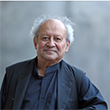
Professor Emeritus
Department of Music
1129 Music Building
barlow (at) music.ucsb.edu
Born in 1945, Clarence Barlow obtained a science degree at Calcutta University in 1965 and a concert pianist diploma from Trinity College of Music London the same year. He studied acoustic and electronic composition from 1968-73 at Cologne Music University as well as sonology from 1971-72 at Utrecht University. His use of a computer as an algorithmic music tool dates from 1971. He initiated and in 1986 co-founded GIMIK: Initiative Music and Informatics Cologne and served as chair for thirteen years. He was in charge of computer music from 1982-1994 at the Darmstadt Summer Courses for New Music and from 1984-2005 at Cologne Music University. In 1988 he was Director of Music of the XIVth International Computer Music Conference, held that year in Cologne. From 1990-94 he was Artistic Director of the Institute of Sonology at the Royal Conservatory in The Hague, where from 1994-2006 he was Professor of Composition and Sonology. From 1994-2010 he was a member of the International Academy of Electroacoustic Music in Bourges, France. At UCSB he functions as professor at MAT, the Music Department (as Corwin Endowed Chair and Head of Composition) and the College of Creative Studies.
His interests are the algorithmic composition of instrumental, electronic and computer music, music software development as well as interdisciplinary activities, e.g. between music and language, and the visual, and would welcome collaboration with MAT students in any of these fields.
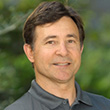
Professor Emeritus
Ph.D. Massachusetts Institute of Technology, MAT and Computer Science. Specialties: computer vision, human-computer interaction, multimodal/perceptual interfaces, gesture recognition.
Matthew Turk is current President of the Toyota Technological Institute at Chicago, an independent philanthropically endowed graduate research institute that focuses on computer science theory and artificial intelligence. He is interested in expanding the ways in which people interact with computers. "Graphical user interfaces are very useful and quite appropriate for some uses of computers, but the computing landscape is changing: we are moving beyond the days when computers are primarily boxes that sit on a desk, used for spreadsheets and word processing. Computers are becoming more ubiquitous, appearing in a proliferation of shapes and sizes. They are being embedded into the world around us, and we are carrying (soon wearing) them wherever we go. We need new ways of conveying and accessing information, without requiring undue effort or attention on our part. We need to make computers accessible to all people in all situations. My particular expertise in this area is vision-based interfaces, using computer vision as an input modality: tracking, recognizing, and modeling people and their activity. New interface technologies become new tools for musical and artistic expression. MAT provides a great opportunity to explore this domain".
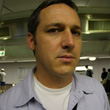
Technical Director, AlloSphere Research Facility
2209 Elings Hall
dennis (at) mat.ucsb.edu
Dennis Adderton is an Electrical Engineer with 20 years of experience in the design of scientific instruments and is currently employed as Technical Director for the Allosphere Research Facility, in the California NanoSystems Institute at UCSB.
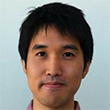
Associate Post Doctoral Research Fellow
AlloSphere Research Group
2003 Elings Hall
konhyong (at) mat.ucsb.edu
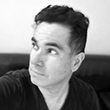
Associate Post Doctoral Research Fellow
AlloSphere Research Group
2003 Elings Hall
grincon (at) mat.ucsb.edu
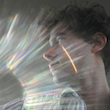
Media Systems Engineer, AlloSphere Research Group
Research Director, Center for Research in Electronic Art Technology
2003 Elings Hall
fishuyo (at) mat.ucsb.edu
Audio Spatialization, Creative Coding, HCI, Electroacoustic Composition Environments, Mobile Devices, Virtual Worldmaking.